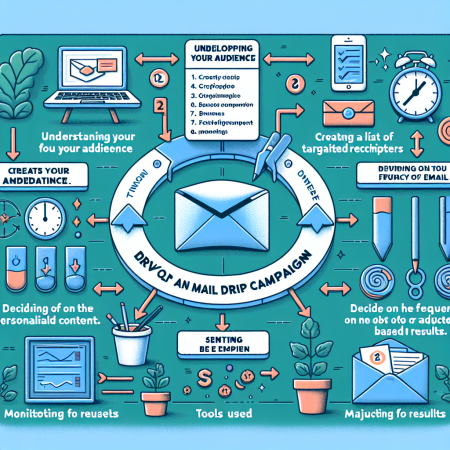How to Develop an Email Drip Campaign
Main Section 1
In the first subsection of your email drip campaign development, it’s essential to define your goals clearly. Determine what you aim to achieve through the campaign, whether it’s increasing brand awareness, generating leads, or driving sales. Understanding your objectives will guide the content and structure of your emails.
Next, consider your target audience. Segment your email list based on demographics, interests, or past interactions with your brand. Tailoring your messages to specific customer segments will increase engagement and conversion rates. Personalization is key to making your emails resonate with recipients.
Thirdly, create a timeline for your drip campaign. Determine the frequency of emails, the duration of the campaign, and the specific triggers that will initiate each email in the sequence. A well-planned schedule ensures that your messages are delivered at the right time to maximize impact.
Lastly, develop compelling content for each email in the campaign. Whether it’s informative articles, promotional offers, or user testimonials, make sure your content is relevant, valuable, and engaging. Strong content will keep recipients interested and drive them to take the desired action.
Main Section 2
Once you have defined your goals and audience, the next step is to choose the right email marketing platform for your drip campaign. Consider factors such as ease of use, automation capabilities, integrations with other tools, and pricing. Select a platform that aligns with your needs and budget.
After choosing a platform, start creating your email sequence. Write compelling subject lines that grab the recipient’s attention and entice them to open the email. Craft concise and engaging copy that conveys your message clearly and prompts the recipient to take action.
When designing your emails, pay attention to visuals and formatting. Use images, videos, and eye-catching layouts to make your emails visually appealing. Ensure that your emails are mobile-responsive to provide a seamless experience across different devices.
Lastly, set up tracking and analytics to monitor the performance of your drip campaign. Track metrics such as open rates, click-through rates, conversions, and unsubscribe rates. Analyzing these data points will help you refine your email content and strategy for better results.
Main Section 3
Segmentation plays a crucial role in the success of an email drip campaign. Divide your email list into different segments based on factors like demographics, purchase history, engagement level, and interests. By sending targeted messages to specific segments, you can personalize the experience for recipients and improve engagement.
Personalization is key to making your emails resonate with recipients. Address recipients by their name, tailor content to their preferences, and recommend products or services based on their past behavior. Personalized emails are more likely to grab attention and drive conversions.
A/B testing is a valuable strategy to optimize your email drip campaign. Test different subject lines, content variations, and calls to action to see what resonates best with your audience. By analyzing the results of A/B tests, you can refine your emails for better performance.
Automating your email drip campaign can save time and ensure timely delivery of messages. Set up triggers based on user actions or time intervals to send emails automatically. Automation allows you to nurture leads, re-engage dormant customers, and deliver targeted content at the right moment.
Main Section 4
Engagement is a key metric to monitor in your email drip campaign. Track how recipients are interacting with your emails, such as opens, clicks, and conversions. Engage with subscribers who show interest in your content and tailor future emails based on their behavior.
Provide valuable and relevant content in each email to keep recipients engaged. Whether it’s educational resources, exclusive offers, or personalized recommendations, ensure that your emails provide value to the recipient. Valuable content builds trust and loyalty with your audience.
Encourage interaction with your emails by including clear calls to action. Whether it’s prompting recipients to visit your website, download a resource, or make a purchase, ensure that your calls to action are compelling and easy to follow. Drive recipients to take the desired action through clear CTAs.
Monitor and analyze the results of your email drip campaign regularly. Identify trends, patterns, and areas for improvement based on the data. By iterating on your campaign based on insights from analytics, you can optimize performance and achieve your goals more effectively.
Main Section 5
Testing is a critical component of developing a successful email drip campaign. Experiment with different elements such as subject lines, content, timing, and frequency to see what resonates best with your audience. Use A/B testing and multivariate testing to gather data and refine your campaign strategy.
Optimize your emails for deliverability to ensure that they reach recipients’ inboxes. Follow email marketing best practices, such as avoiding spammy content, using clear subject lines, and maintaining a clean email list. Monitoring deliverability metrics will help you maintain a positive sender reputation.
Continuously optimize and refine your email drip campaign based on performance data. Use insights from tracking and analytics to adjust your content, timing, and segmentation strategy for better results. By staying agile and responsive to data, you can enhance the effectiveness of your email drip campaign over time.

